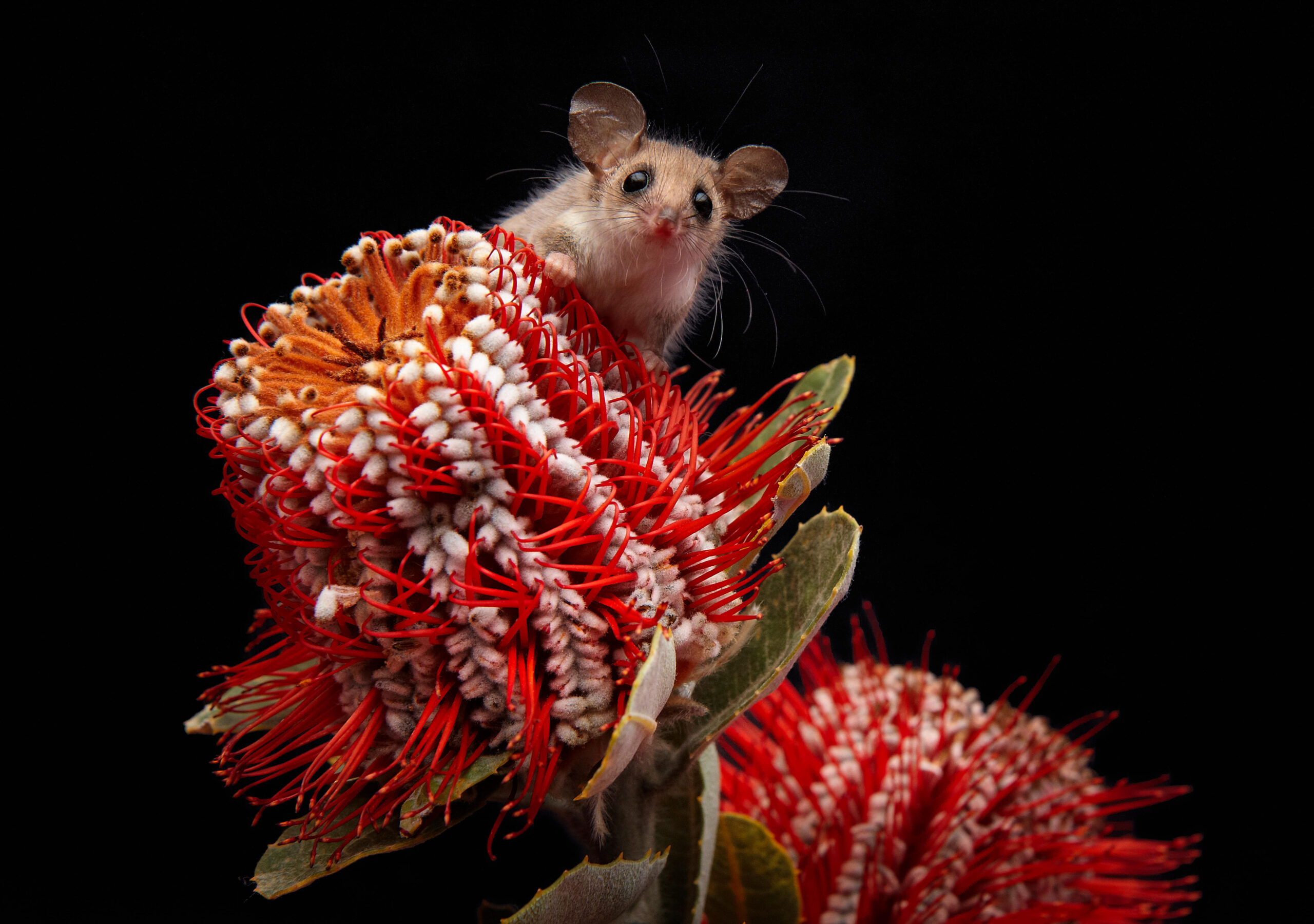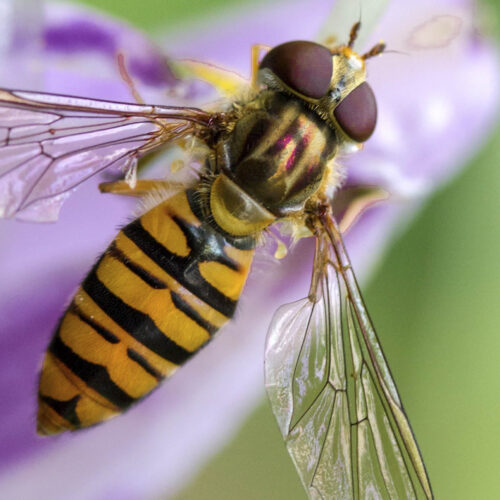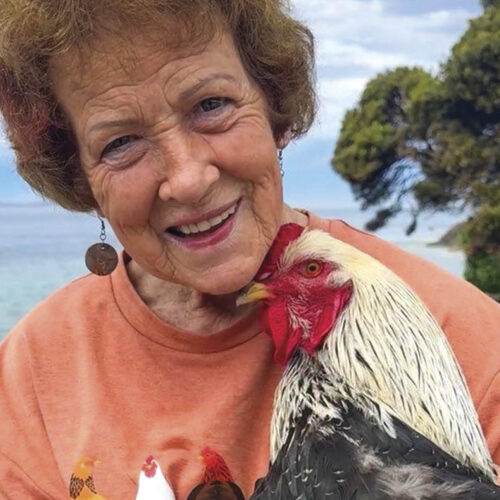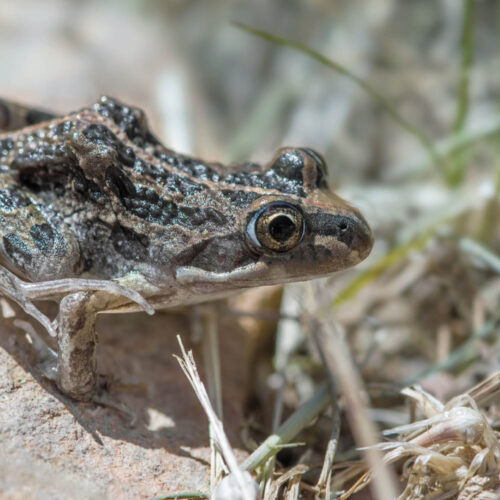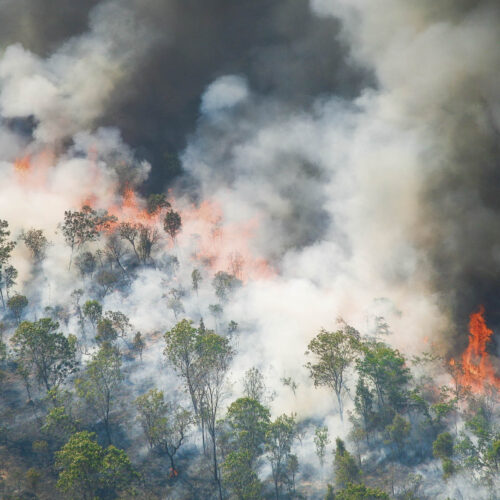Where have all the insects gone?
2020-01-03T03:18:10+11:00
There's new research revealing the alarming loss of insects all over the planet, what is causing it, which insects are most affected and what we can do.
For some people, insects can be pretty scary. The mere thought of March flies and mosquitoes makes them itchy. Gardeners, on the other hand, relish beneficial insects such as dragonflies, hover flies and ladybirds. Irrespective of your predilections, nature depends upon 900,000 different kinds of wriggling, buzzing, floating, spinning, swimming and soaring invertebrates in order to function.
Alas, just like our planet’s climate, the insects, too, are in terrible trouble.
During the summer, no matter where you live in the world, whether you are bicycling, driving an automobile or motorcycle, the absence of insects is apparent. There are far fewer smashed bugs on sunglasses, windshields and helmet visors. In some locations, eerily, there are almost none.
A global study undertaken by the University of Sydney[1] has sounded the sirens: the situation is serious. The results of the review of 73 in-depth studies revealed that 41 per cent of all insect species are in decline. One third of those species are threatened with extinction. That horrendous rate of decline is about eight times higher than vertebrates.
Of the 73 studies reviewed, there was only one long-term Aussie study on domesticated honeybees from Far North Queensland, showing that scientists have only scratched the surface of our understanding of the planet’s insect population and the enormity of the collapse.
When we examine the two longest running insect studies from Germany and Puerto Rico, the results are appalling. In both countries over the previous three decades, over 75 per cent of all insects have vanished. Moving forward each year, these two areas are losing around 2.5 per cent of their remaining annual insect biomass. Extrapolating those current results to 2030 is terrifying because all the insects at the two sites could be gone. It’s a stark wake-up call and an ominous reminder of the accelerating humankind-driven sixth mass extinction.(2) Thousands of scientists are calling for urgent action to slow down this biological annihilation. One positive is that eco-minded gardeners can help massively by supporting beneficial birds and insects in their gardens.
Why are insects so important?
As vital members of the Earth’s ecosystems, insects perform many important functions. For example, insects aerate the soil, pollinate blossoms, self-regulate themselves as well as protecting some plants.
Many insects, especially beetles, are scavengers. They feast upon dead animals and help begin the decomposition process of fallen trees. They also recycle nutrients. Along with many other insects and soil flora, beetles help create rich humus, enabling plants to grow. Burrowing bugs, such as ants, beetles and others, excavate tunnels that provide channels for oxygen and water thereby sustaining plant growth. Bees, hover flies, wasps, butterflies, ants and many others pollinate 330,000 kinds of flowering plants. Insects fertilise the soil with nutrients via their droppings. Then there’s the smorgasbord of food insects provide for amphibians, birds, mammals, fish and reptiles. Insects comprise two thirds of all terrestrial species on Earth. Life on this planet cannot exist without the breathtaking diversity and bulk of the astonishing insects.
Hover flies are heroes. Some 6000 species of these splendid beneficial insects make them the second most important plant pollinators next to 20,000 kinds of bees. Large bulbous eyes, short antennae and a single pair of wings easily identify the hover fly. These beauties dart to and fro and hover like miniature spy helicopters while feeding on nectar and pollen. Many of the more furtive species employ a black and yellow striped camouflage, mimicking the colouration of bees and wasps to foil predators. Hover fly larvae are voracious consumers of aphids and scale. They are wonderful garden custodians. The two most common Australian species of hover flies are Melangyna viridiceps and Simosyrphus grandicornis. Hover fly eggs require still water to develop.
Unfortunately, among the 120,000 or so species of flies on the planet, sophisticated long-lasting poisons have trounced global populations.
Causes of rapid decline
Habitat loss, agricultural intensification, pollution, pathogens, introduced species, global warming and manmade poisons have collided to cause this global insect armageddon. Of these seven factors, three are particularly worrisome.
Destruction of Nature The rate of intensive agriculture in industrialised countries is greater than that of developing nations, with soils becoming increasingly impoverished. In contrast, the destruction of ancient forests and wetlands in developing countries supersedes that of the developed world. The loss of habitat is accelerating extinctions. Man is felling the equivalent of one football field of ancient native bush every second, 24/7, 365 days a year.
Earth’s ancient forests are invaluable CO2 warehouses. As these cherished cathedrals age, they inhale more CO2 and exhale more oxygen. Earth’s atmospheric oxygen, as measured by Scripps O2 program, is plummeting from the combustion of fossil fuels.(3) Every ancient living tree is a priceless oxygen generator, and as a part of a forest, they regulate local, regional and continental climates.
In NSW, it was recently reported that over the previous three years land clearing has spiked by 800 per cent. Wetlands are being paved at three times that awful global deforestation rate. Nature demands immediate legal protection and a global commitment to enforce it.
Global Warming The Australian Alps are a heavenly slice of unique fauna and flora, especially adapted to a winter snowfall environment that is effectively regulated by the enigmatic root systems of the incomparable cold-tolerant snow gums. But over the previous decade, bushfires have repeatedly scorched the Alps, while heatwaves and droughts have killed a million gums. As a result, billions of summertime High Country ambassadors, the migrating bogong moths, are gone. This, in turn, has tightened the noose on the critically endangered mountain pygmy possums, which depend upon the moths as their food source after emerging from hibernation in September. No moths. No food. No pygmy possum offspring.
The grandfather of High Country ecology, Dr Ken Green, has been monitoring bogong moths for almost half a century. He’s apprehensive because, “Last summer numbers were atrocious. It was not just really bad, it was the worst I had ever seen. Now this year it’s got even worse.”
Alas, the bogong moth is just one stark example of the impact global warming is having on insects all over Australia and the world.
Nerve Poisons The vast quantity of deadly nerve poisons thrust each year into the biosphere, to deliberately slay insects, is gobsmacking. At a molecular level, a class of insecticides called neonicotinoids, or, neonics, is as much as 10,000 times more toxic than DDT: around 1,200,000,000 kilos of neonics are applied annually.[4] Scientists at the French National Centre for Scientific Research (CNRS) reported that neonics are deadly for frogs, birds, fish, honeybees, hover flies, earthworms and many others.
Already six different neonics have been found in 48 different rivers and streams in the US. In western Canada, the contamination is far more wide reaching. Upwards of 80 to 90 per cent of the wetlands are full of these nerve poisons that drained off the oilseed crop fields. Neonics have decimated bird populations, which rely upon insects as their crucial food source.
Canadian toxicologist, Dr Christy Morrissey, has been monitoring neonics in waterways and the resultant loss of birds across the prairies. She warned, “We all want to have food that we consume and enjoy, but at what cost?”
Dr Henk Tennekes, a Dutch toxicologist, has meticulously documented that neonics are water soluble, mobile in soils and persistent for decades in water.(5) He has written how the neonic imidacloprid contaminated western Dutch surface waters, killing springtails, beetles, flies and earthworms, robbing the soil of its necessary beneficial fauna. Those insects are a crucial food source for many common grassland bird species.
Moving up the food chain, Tennekes discovered that populations of avian predators such as eurasian goshawks and northern goshawks have likewise fallen, dramatically.
Quite simply, neonics have torn a massive hole in the web of life throughout western Europe. As a result, the European Union (EU) has recently banned three neonics to help protect all creatures, soils and waterways.
Neonics have been found in samples of drinking water, honey, processed foods, vegetables, cereal grains, tree nuts, fruits and tobacco. Lawmakers in other countries are following the EU lead, passing laws to protect biodiversity.
Which insects are most affected?
The most glaring trend amid the missing insects is the direct consequence of poisons on the pollinators (bees, hover flies, butterflies) and the fresh water insects (beetles, caddisflies, dragonflies, mayflies, stoneflies). No pollinators means that we could lose 75 per cent of our food. The diversified water-dependent insects are both predators and prey, a good barometer of fresh water health while being vital food for fish, reptiles, amphibians, bats and others.
That such large diverse groups of insects are all declining, as the use of nerve poisons is skyrocketing, is a clear signal of far-reaching chemical toxicity stoking the accelerating Earth’s sixth mass extinction.
For every problem there’s at least three solutions. Scientists understand the causes of the insect decline and how to slow it down, so there is hope.
While penning this story, a billion painted lady butterflies danced across southern California’s sky – a rare pageantry and an encouraging spectacle after a wet winter. We must all become caretakers, consuming and wasting much less in order for nature to survive the forthcoming decades.
Action you can take
The destruction of habitat and insects is devastating, but there is so much individuals can do stem the tide and give insects a chance. Here are some ideas to get you started:
• Become a citizen scientist and join community monitoring groups such as Atlas of Living Australia (ala.org.au/citizen-science-central) and Project Finder.
• Join an environment group and work to convince authorities and governments of the urgent action needed, such as stopping land clearing and better chemical regulations.
• Always provide wild spaces and nesting sites for insects and wildlife in your garden: ponds for water insects, bee houses for native and honey bees, and watering stations. In fact, you could even keep your own bees!
• Plant your garden with nectar-rich, insect attracting flowers, plants and trees.
• Only spray pest insects with organic sprays as a last resort, and even then, when beneficial insects are not present.

